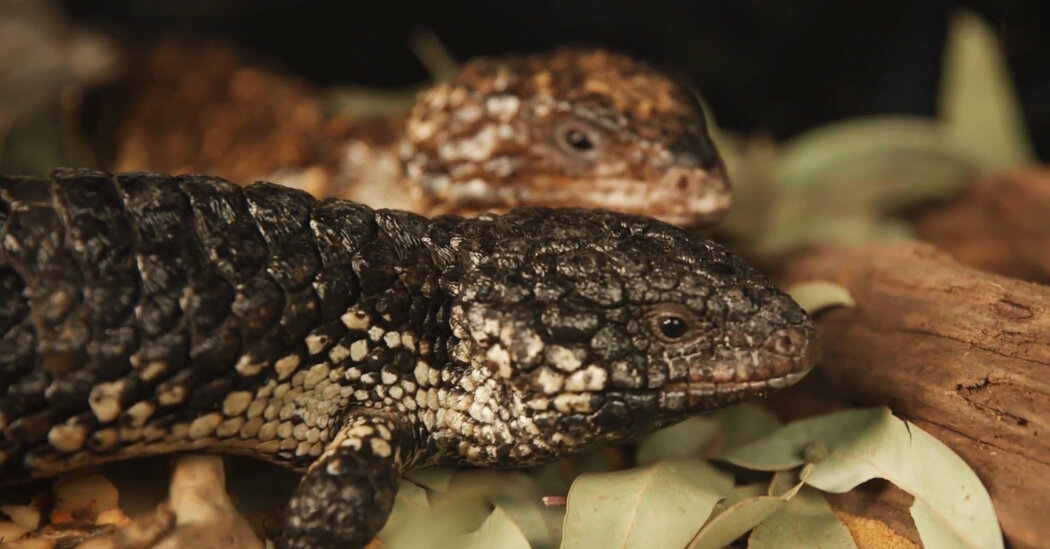They May Have Love on Their Lizard Brains
[ad_1]
Even without our cultural biases, reptiles can be difficult to study.
“A lot of them are pretty shy,” said Allison Alberts, a conservation scientist and co-founder of the Iguana Specialist Group at the International Union for Conservation of Nature. She added that “They’re so sensitive to when a person’s there. They just freeze — they will not do some of their normal social interactions when a person’s around.”
Many forms of interaction between reptiles are also invisible.
“Chemical communication plays a huge role,” said Julia Riley, a behavioral ecologist at Mount Allison University in New Brunswick, Canada. “And that’s something you can’t even see and it’s very hard to sample from the environment as well.”
Yet despite these prejudices and difficulties, researchers are starting to unveil the complex social worlds of these creatures.
🦎😍
One of the most fascinating discoveries of reptile social behavior — long-term monogamy in shingleback lizards like Ned and Sunny — happened entirely by accident.
Michael Bull, the Australian biologist who made the discovery, was initially less focused on lizards and more interested in studying the different species of ticks that lived on them. Beginning in 1982, he would capture shinglebacks, mark them, take various measurements, then release them. After several years (and thousands of lizards), he noticed that each spring, after months apart, the same males and females would somehow manage to find each other.
Shingleback courtship is perhaps not the most romantic by human standards.
“The male will trail the female around for a number of weeks, often a few months, and defend that female from any other male that tries to encroach,” said Jane Melville, senior curator of terrestrial vertebrates at Museums Victoria Research Institute in Australia. Males have also been seen allowing their mates to eat first, she said.
